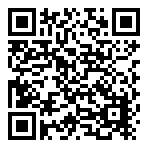The cloud is a well-established option for businesses to embrace nowadays. So much so, in fact, that the benefits of migrating their data environment to the cloud have encouraged many to take the plunge (or would that thematically be ascent?) into cloud-delivered services. These transitions don’t come without their issues, of course. Let’s go over a few of the most common challenges that a business encounters when performing a cloud migration.
We Define IT Consulting
While it really would be a nice thing to have, there is no magic bullet for your business’ cybersecurity—no single tool that allows you to avoid any and all issues. However, there is one way to help make most threats far less likely to be successful: building up your company’s internal security awareness amongst your employees and team members. Let’s go over eleven ways that you can help ensure your company is properly protected, simply by encouraging your employees to take a more active role in guarding it.
Last weekend saw a significant cyberattack waged against the world’s largest meat processor and distributor, JBS S.A., that completely suspended the company’s operations in both North America and Australia… and as a result, has impacted the supply chains associated with the company. Let’s examine the situation to see what lessons we can take away from all this.
HIPAA—the Health Insurance Portability and Accountability Act—is a serious concern for all healthcare providers that operate within the United States, and for good reason! Since August 1996, HIPAA has mandated that these healthcare providers comply with various best practices. While HIPAA is relatively familiar to many people for assorted reasons, fewer know about HITRUST (the Health Information Trust Alliance) and how these acronyms ultimately cooperate with one another.
Most accounts these days require a password of some sort, and as such, the average user has countless of these codes that need to be kept both secure and top-of-mind. Some web browsers have built-in password management tools to help make them more user-friendly, but with so much convenience involved, one has to ask whether or not these built-in management tools are as secure as they should be.
The blockchain has made quite a splash, beginning as the technology that powers Bitcoin before branching out into different use cases that many businesses are already taking advantage of. Let’s go over the benefits—and shortcomings—of the various varieties that blockchain now comes in, and how they are commonly used.
Workplace stress has increasingly been focused on as a prescient problem for businesses, with an increased focus on identifying the causes and mitigating the impacts. A recently published patent from Microsoft helps to demonstrate how seriously this is now taken… although it also begs the question: do we really need technology’s help to identify when we feel stressed?
Whether you are just a fledgling small business just trying to get your feet off the ground or a larger-scale enterprise with a multitude of clients, one thing will always remain the same: in today’s business world, the cloud is king, and it has the potential to change the way that your business operates for the better.
Headlines have been filled with news pertaining to the recent hack of Colonial Pipeline, which has created significant gasoline shortages up the east coast of the nation. While the pipeline has been restored, the way this was accomplished sets a dangerous precedent. On top of this, the attack seems to have set off bigger infrastructural changes in the political space.
Businesses need to maximize productivity any way they can. Some look to software to make this happen. When searching for productivity software, it may seem like you are looking at the same thing over and over again. While we admit that many productivity programs are similar, it’s important that you acquire the software that will give your team the tools it needs to succeed. Let’s take a look at how you can find the right productivity apps for your business’ needs.
Did you know that maps as we know them are remarkably skewed? Due to some centuries-old superiority complexes and prejudices, the maps we’ve all been raised looking at have never been completely accurate. However, this problem could soon be an element of cybercrime thanks to a developing technology that many have yet to take seriously, deepfake images, and how they could revolutionize cyberattacks moving forward.
It is undeniable that businesses have increasingly been relying on technology. The past year has been especially digital as millions of people were working remotely. Many of these people required some type of technology support. Today, we are going to discuss how companies like ours were able to provide comprehensive IT support to so many people while they worked from home.
Because of the protection it can offer your organization, data backup is a necessary tool for you to have—that is, provided it has the requisite security and reliability you’ll need should you ever have to lean on it. Let’s go over a few guidelines to help you be sure that your backup is trustworthy enough to stake your business’ future on.
Few things are scarier for a modern business to consider than the idea that they will be hacked, regardless of that business’ size or industry. After all, hacking can, will, and does cause significant damage across basically all aspects of your organization. This is precisely why it is so important that—should a business be hacked—the proper steps are taken in response.
Accessibility to the Internet is a hot topic because, at this point, almost everyone should be afforded Internet access. The fact that some people don’t have access to the Internet puts them at a severe disadvantage. One group that has major problems with accessibility are disabled people. Let’s discuss what can be done about that.
With many—if not most—computers and especially laptops featuring integrated webcams at this point, it isn’t hard to imagine how disastrous it would be to be spied on through it. Let’s take a few moments and go over a few ways to be sure that your webcam isn’t being used without your consent by someone else.
Remote work is often lauded for its various benefits—and don’t get us wrong, there are certainly plenty of them to account for. However, it must also be said that remote work is far from perfect. Take the environmental impacts it can have, for instance. Let’s discuss how working from home can prove better for the environment, while also addressing the serious problems it has contributed to—and, just maybe, how we can help minimize some of them.




















